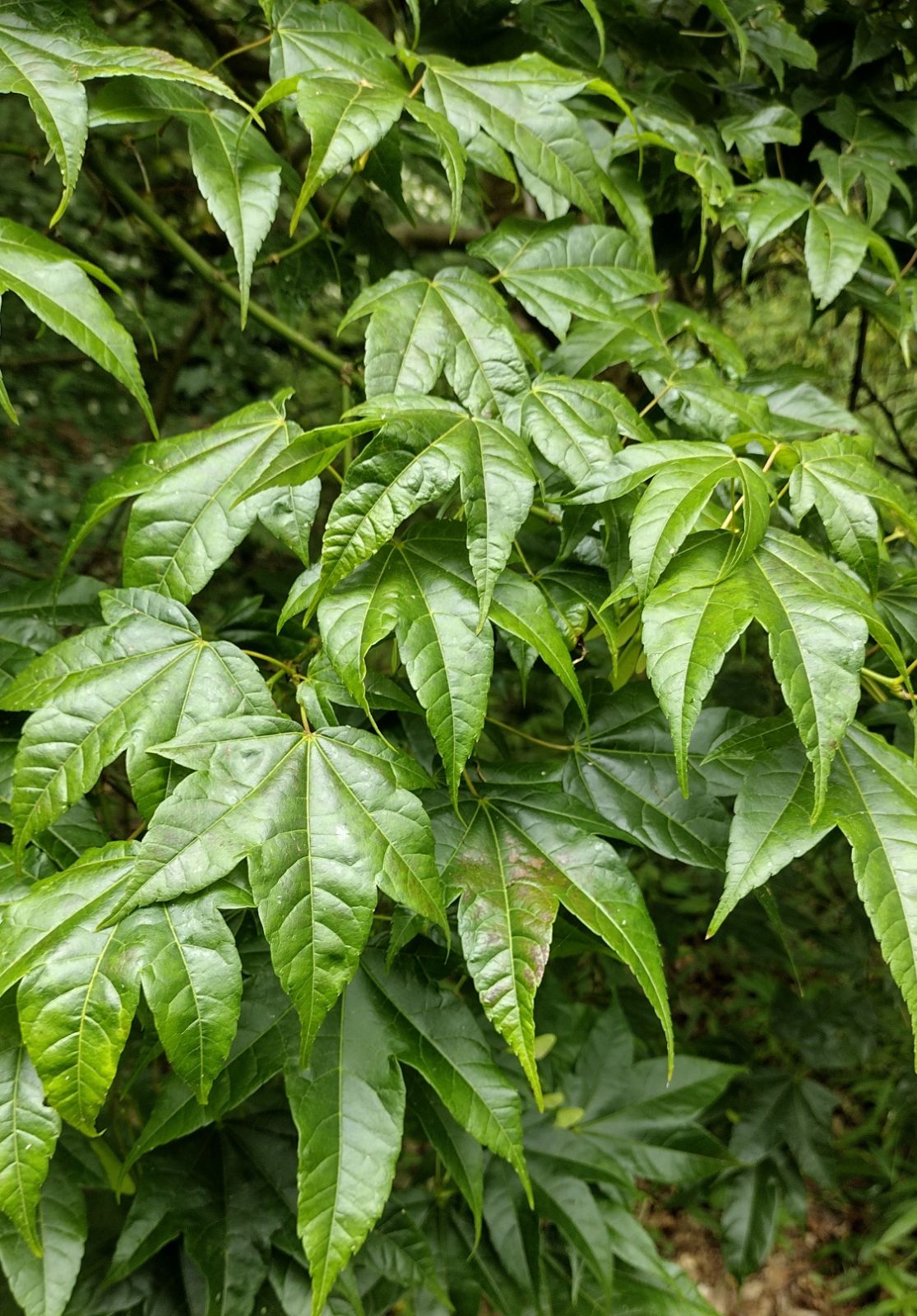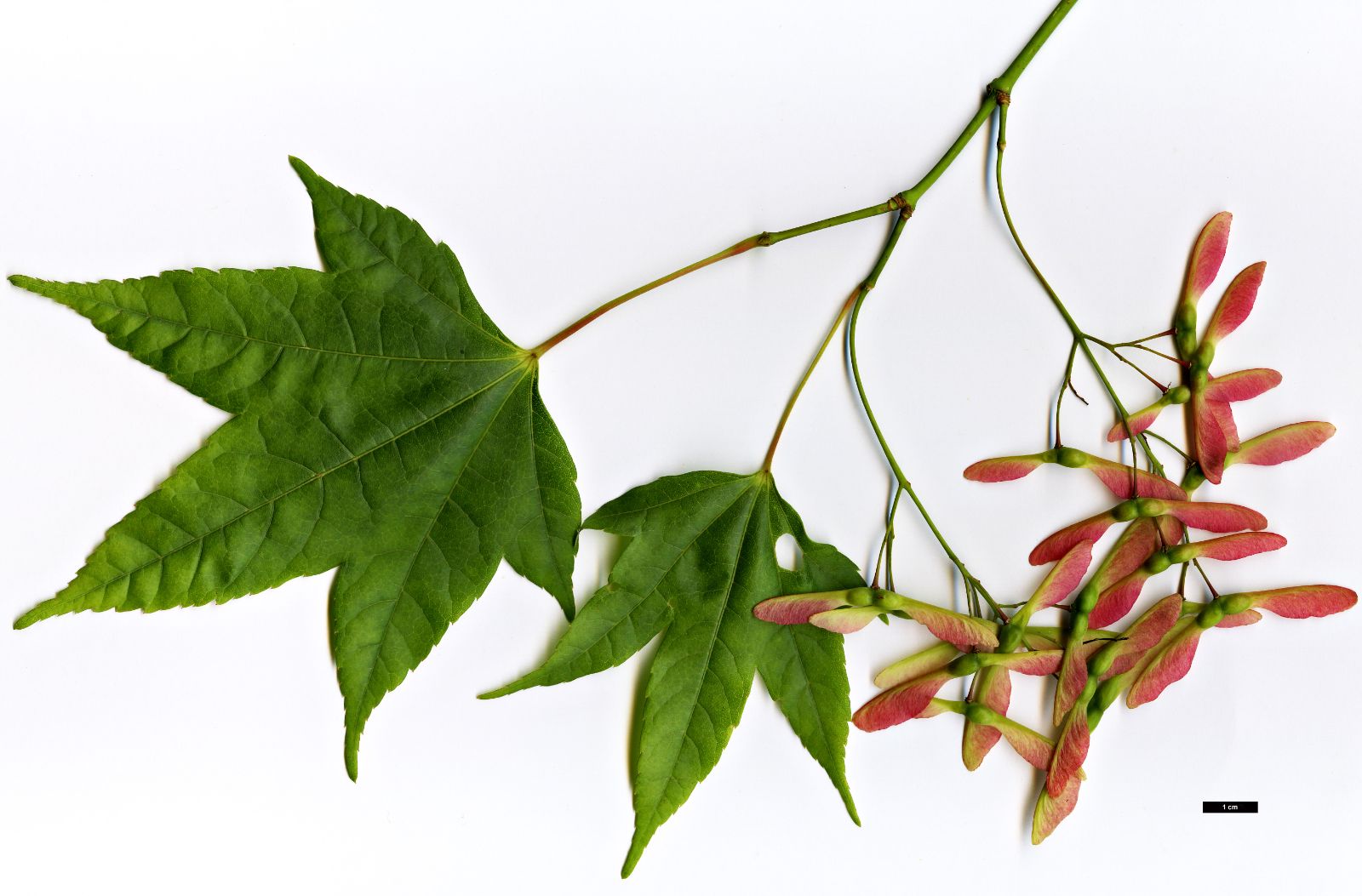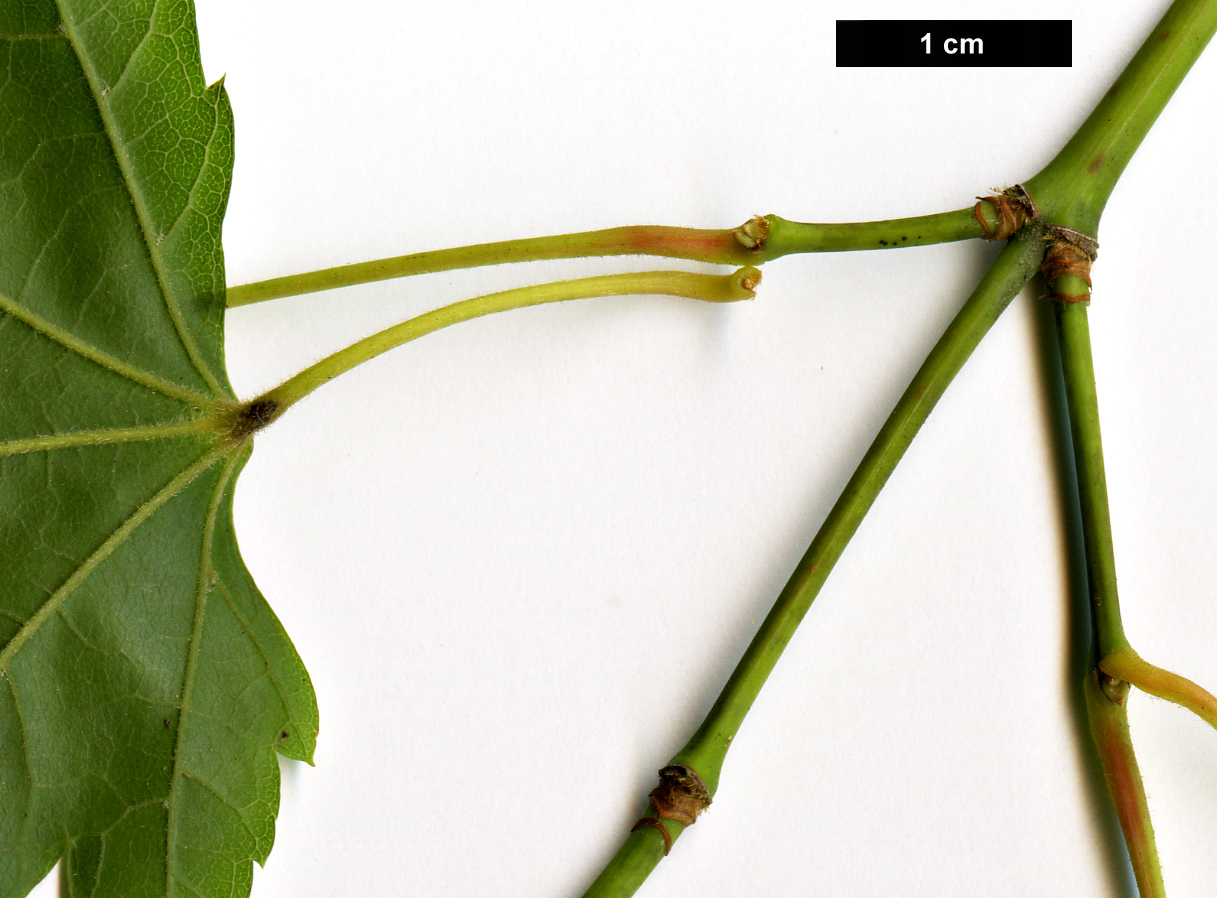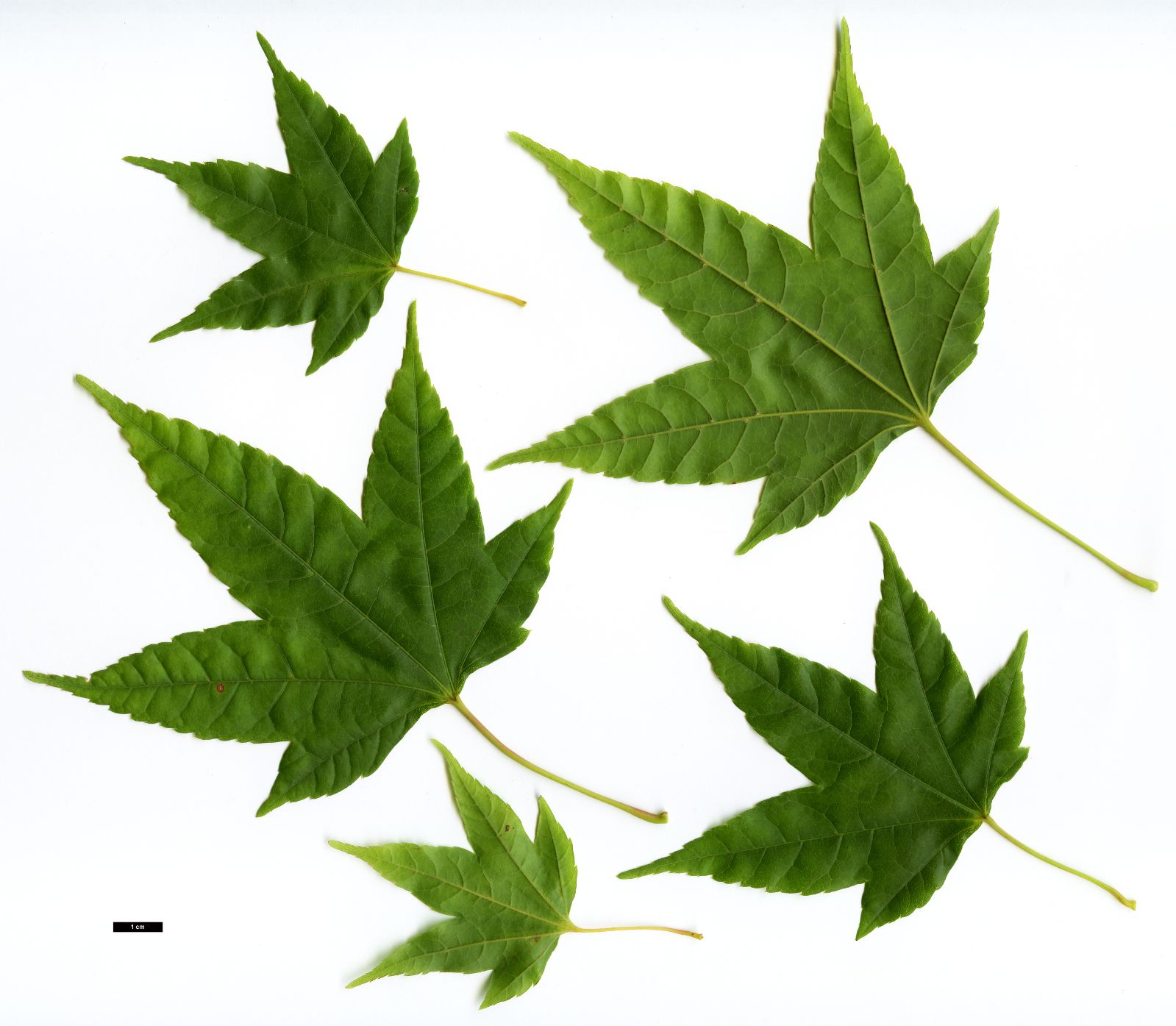Acer elegantulum
Sponsor
Kindly sponsored by
Lawrence Banks
Credits
John Grimshaw, Ross Bayton & Dan Crowley (2020)
Recommended citation
Grimshaw, J., Bayton, R. & Crowley, D. (2020), 'Acer elegantulum' from the website Trees and Shrubs Online (treesandshrubsonline.
Genus
- Acer
- Sect. Palmata, Ser. Sinensia
Synonyms
- Acer olivaceum W.P. Fang & P.L. Chiu
- Acer yaoshanicum W.P. Fang
Other taxa in genus
- Acer acuminatum
- Acer amplum
- Acer argutum
- Acer barbinerve
- Acer buergerianum
- Acer caesium
- Acer calcaratum
- Acer campbellii
- Acer campestre
- Acer 'Candy Stripe'
- Acer capillipes
- Acer cappadocicum
- Acer carpinifolium
- Acer 'Cascade'
- Acer caudatum
- Acer ceriferum
- Acer chapaense
- Acer chienii
- Acer circinatum
- Acer cissifolium
- Acer × conspicuum
- Acer cordatum
- Acer coriaceifolium
- Acer × coriaceum
- Acer crataegifolium
- Acer davidii
- Acer diabolicum
- Acer distylum
- Acer divergens
- Acer duplicatoserratum
- Acer erianthum
- Acer 'Esk Flamingo'
- Acer fargesii
- Acer fenzelianum
- Acer flabellatum
- Acer forrestii
- Acer franchetii
- Acer × freemanii
- Acer fulvescens
- Acer 'Gimborn'
- Acer ginnala
- Acer glabrum
- Acer 'Gold Coin'
- Acer granatense
- Acer grandidentatum
- Acer griseum
- Acer heldreichii
- Acer henryi
- Acer × hillieri
- Acer hookeri
- Acer hyrcanum
- Acer japonicum
- Acer kawakamii
- Acer komarovii
- Acer laevigatum
- Acer laurinum
- Acer laxiflorum
- Acer lobelii
- Acer longipes
- Acer macrophyllum
- Acer mandshuricum
- Acer maximowiczianum
- Acer maximowiczii
- Acer metcalfii
- Acer miaotaiense
- Acer micranthum
- Acer 'Mindavi'
- Acer 'Minorient'
- Acer miyabei
- Acer miyabei × campestre
- Acer monspessulanum
- Acer morifolium
- Acer 'Mozart'
- Acer oblongum
- Acer obtusifolium
- Acer okamotoanum
- Acer oliverianum
- Acer opalus
- Acer orientale
- Acer palmatum
- Acer papilio
- Acer pauciflorum
- Acer pectinatum
- Acer pensylvanicum
- Acer pentaphyllum
- Acer pentapotamicum
- Acer pictum
- Acer pilosum
- Acer pinnatinervium
- Acer platanoides
- Acer platanoides × amplum
- Acer platanoides × truncatum
- Acer × pseudoheldreichii
- Acer pseudoplatanus
- Acer pseudosieboldianum
- Acer pubinerve
- Acer pycnanthum
- Acer rubescens
- Acer rubrum
- Acer rufinerve
- Acer saccharinum
- Acer saccharum
- Acer sempervirens
- Acer 'Serpentine'
- Acer serrulatum
- Acer shenkanense
- Acer sieboldianum
- Acer sikkimense
- Acer 'Silver Cardinal'
- Acer 'Silver Ghost'
- Acer sinense
- Acer sinopurpurascens
- Acer spicatum
- Acer stachyophyllum
- Acer taronense
- Acer tataricum
- Acer tegmentosum
- Acer tenellum
- Acer tetramerum
- Acer tibetense
- Acer tonkinense
- Acer triflorum
- Acer truncatum
- Acer tschonoskii
- Acer turkestanicum
- Acer tutcheri
- Acer ukurunduense
- Acer velutinum
- Acer wardii
- Acer 'White Tigress'
- Acer wilsonii
- Acer × zoeschense
Tree to 15 m, though often not exceeding 5 m in cultivation; densely branched. Bark brown and scabrous. Branchlets green. Leaves deciduous, chartaceous, 5–13 × 7–16 cm, palmately 5-lobed (rarely 7-lobed), largely glabrous, but for the tufts of hair in the vein axils of the lower surface, margins minutely serrate, lobe apex acute to acuminate or mucronate; petiole 2.8–6 cm long, glabrous. Inflorescence terminal, paniculate. Flowers 5-merous, usually dioecious; sepals light green, ovate to oblong, petals light green, obovate to oblong, stamens 8, inserted inside the nectar disc. Samaras 2–2.5 cm long, pale yellow when mature, wings spreading obtusely. Flowering in May, fruiting in September (China). (van Gelderen et al. 1994; van Gelderen & van Gelderen 1999; Xu et al. 2008).
Distribution China Southern Anhui, Fujian, Guangxi, Guizhou, Hunan, Jiangxi, Zhejiang
Habitat Montane forest between 200 and 1400 m asl.
USDA Hardiness Zone 7-8
RHS Hardiness Rating H4
Conservation status Least concern (LC)
Taxonomic note Included by van Gelderen et al. (1994) Acer elegantulum var. macrurum W.P. Fang & P.L. Chiu has smaller samaras (1–1.5 cm long), though this taxon is treated as a synonym by Xu et al. (2008).
Acer elegantulum is one of the more recent introductions in series Sinensia, its affinity to its relatives from China immediately apparent. From A. flabellatum and those close to it that are better known in collections, the posture of the leaves is slightly different, those of A. elegantulum being slightly drooping whereas those of A. flabellatum and relatives are held flat. The leaves of A. elegantulum are also smaller and, in the specimens seen, more deeply and jaggedly lobed, giving a shape suggestive of that of Cannabis sativa. The leaves flush with shiny bronze to deep purple-brown, but become green when mature, with the stems remaining green. The whole plant has a very pendulous habit like other members of series Sinensia.
The species is represented in the major European collections, where it seems to grow well, flowering and fruiting reliably after 12–15 years; it is also cultivated in the milder parts of North America. The first introduction seems to have been made in about 1985 from Shanghai Botanic Garden (van Gelderen et al. 1994), while a flourishing tree of over 5 m at Westonbirt derives from a 1986 introduction from Hangzhou Botanical Garden (le Hardÿ de Beaulieu 2003). It soon became available to collectors through the nursery trade. A specimen at Sandling Park, Kent, grown from the Hangzhou introduction was 6 m tall in 2018 (The Tree Register 2018). Plants sourced from Heritage Seedlings grow at the Hoyt Arboretum, Oregon, while a specimen so named, sourced from Piroche Plants Inc. has recently been added to the maple collection at the David C. Lam Asian Garden, Vancouver.







